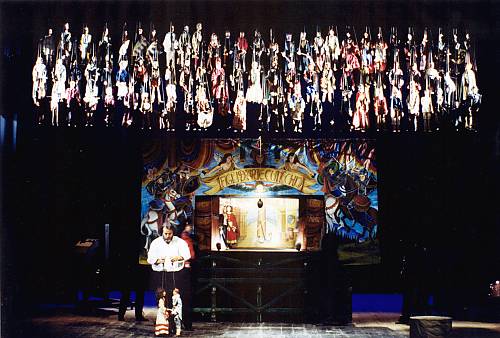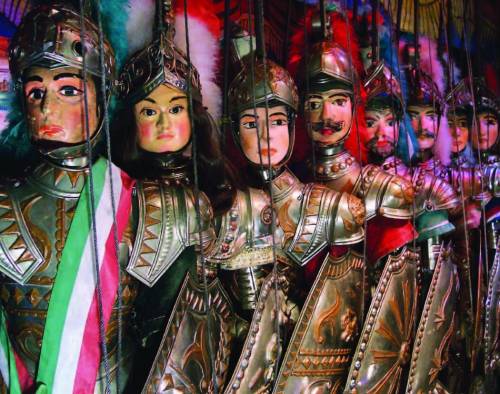Opera dei Pupi, Sicilian puppet theatre
Inscribed in 2008 (3.COM) on the Representative List of the Intangible Cultural Heritage of Humanity (originally proclaimed in 2001)
1.1 Description of the element
The puppet theatre known as the Opera dei Pupi emerged in Sicily at the beginning of the nineteenth century and enjoyed great success among the island’s working classes. The puppeteers told stories based on medieval chivalric literature and other sources, such as Italian poems of the Renaissance, the lives of saints and tales of notorious bandits. The dialogues in these performances were largely improvised by the puppeteers. The two main Sicilian puppet schools in Palermo and Catania were distinguished principally by the size and shape of the puppets, the operating techniques and the variety of colourful stage backdrops.
These theatres were often family-run businesses; the carving, painting and construction of the puppets, renowned for their intense expressions, were carried out by craftspeople employing traditional methods. The puppeteers constantly endeavoured to outdo each other with their shows, and they exerted great influence over their audience. In the past, these performances took place over several evenings and provided opportunities for social gatherings. The economic and social upheavals caused by the extraordinary economic boom of the 1950s had a considerable effect on the tradition, threatening its very foundations. At that time, similar forms of theatre in other parts of Italy disappeared, some of them to re-emerge some twenty years later. The Opera dei Pupi is the only example of an uninterrupted tradition of this kind of theatre. Owing to current economic difficulties puppeteers can no longer make a living from their art, prompting them to turn to more lucrative professions. Tourism has contributed to reducing the quality of performances, which were previously aimed at a local audience only.
1.2 Geographical location and Range of the element:
Sicilia region. The element is particularly practiced in the Palermo and Catania municipalities
1.3 Domain(s) of the element:
Domain(s) of the element as intangible cultural heritage identified according to the Article 2.2 of the Convention:
- Oral traditions and expressions, including language as a vehicle of the intangible cultural heritage
- Social practices, rituals and festive events
- Performing arts
- Traditional craftsmanship
Decisione dell’Organo di Valutazione
Decisione 3.COM 1
Il Comitato
include nella Lista Rappresentativa del patrimonio culturale intangibile dell’umanità i 90 “capolavori del patrimonio orale e immateriale dell’umanità” proclamati prima dell’entrata in vigore della Convenzione, come elencato nel documento ITH / 08 / 3.COM /CONF.203/1;



